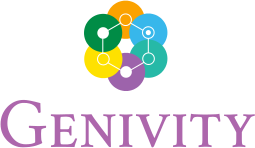How do I help my clients start a conversation about their family health history + finances?
What if your clients know it’s something they should do but you don’t know where to start? The FACE approach can provide you a framework for your clients to get the discussion started with
Clients should begin by identifying the best person in their family to talk to first—this may be the person who has the most relevant health and financial history for your own information (such as a parent). Whoever they choose, it is best if they feel somewhat comfortable raising the subject with them. They should then find an opportunity to be together, face-to-face, and the following script can guide your client through the rest of the conversation.
Here is what FACE stands for and how your clients can use it to simply and calmly start hard conversations about health and wealth.
F – Framing and Feedforward
When broaching a potentially sensitive topic such as health and wealth, the first step is the hardest. When you imagine that this conversation might seem to come out of the blue for the person you’re speaking with, sharing your reasons for wanting to talk will be key to the success of your conversation. Sharing your purpose for communicating before launching into the subject is called framing or feedforward (the reverse of feedback). Try to recall what started you thinking about your family’s health and wealth history, and begin your conversation by sharing that with your family member. Whatever the story is, sharing it with your family member will help them to orient themselves and prepare them for the conversation.
A – Asking the question
Timing and the willingness of your family member to talk about the topic are essential for success, so this step is when you invite them to participate in the conversation. You may choose to keep the focus of the discussion narrowly on the topic that got you started (like breast health, heart health, and retirement planning) or you can bridge to a larger discussion about family health. For a more focused conversation, follow up your framing/feedforward statement with something like this:
- “Is it OK if I ask you some questions about your experience with health exams?”
- “Can you tell me more about what your plans are for retirement?”
If you’re hoping to initiate a more comprehensive conversation about family health history, you could say, “I realized that Grandma’s hospitalization wasn’t the only health event in our family that I don’t know much about. Would you be willing to share what you know with me?” In any case, what you want is to give your family member the chance to consider your invitation and respond gladly, defer the conversation to another time, or turn you down if they don’t feel comfortable. If the first person you approach turns out to be unprepared or uncomfortable with the conversation, don’t give up.
C – Conversing (and Taking Notes)
Although you are seeking information from your family member, you do not want the experience to feel like an interrogation. Just as you want to the initial question to serve as an invitation, you want the interaction that follows to feel like a conversation. Two principles will help you here:
- Take the lead of the person you are speaking with. If they seem interested in telling you a story that seems to take you a little off the path of your original question, go with it. By the time the story is finished or even when you reflect on the story later, you may find tremendous relevance that may not be immediately apparent.
- Use the “statement-question” format to keep the conversation going. When your family member says something that requires more information or clarification, restate what you heard them say and then ask the question. For example, “I notice that you’ve mentioned grandma’s health a few times. Are you planning to have her live with you at some point?”
And when taking notes: If you’re lucky, you’ll find that the person you invited into this initial conversation is ready and willing to supply you with a lot of information—the kind of information that can be difficult to remember later. It’s appropriate to take notes, just make sure to let your family member know why you want to write down what they are telling you. You might say, “I want to remember what you are saying so I can share it with my advisor”. This also might be a good opportunity to transition to the fourth step.
E – Expanding the Circle
Inevitably, there will be gaps in the stories shared by the first people you speak with—missing facts and questions left unanswered—so it will be important to expand the circle of people included in the discussion. Rounding off this initial conversation with your family member should include three things:
- an expression of gratitude (for example, “This has been really helpful to me,” “You’ve helped to answer some questions that were troubling me; thank you.”)
- an indication that you hope the conversation will continue (like, “Please let me know if you remember anything else that may be relevant.”)
- and a request for suggestions of who else to include in the conversation (such as “Who else in the family should I talk to about this?”).
At some point, these family conversations may expand naturally so that others are drawn to them, and this is ideal in many ways because the family as a group becomes invested in thinking and talking about the health (both physical and financial) of its members. When this happens, it will be time to suggest ways that this information can help existing family members in addition to supporting the health and legacy of the next generation. And isn’t that a purpose we can all relate to, particularly
